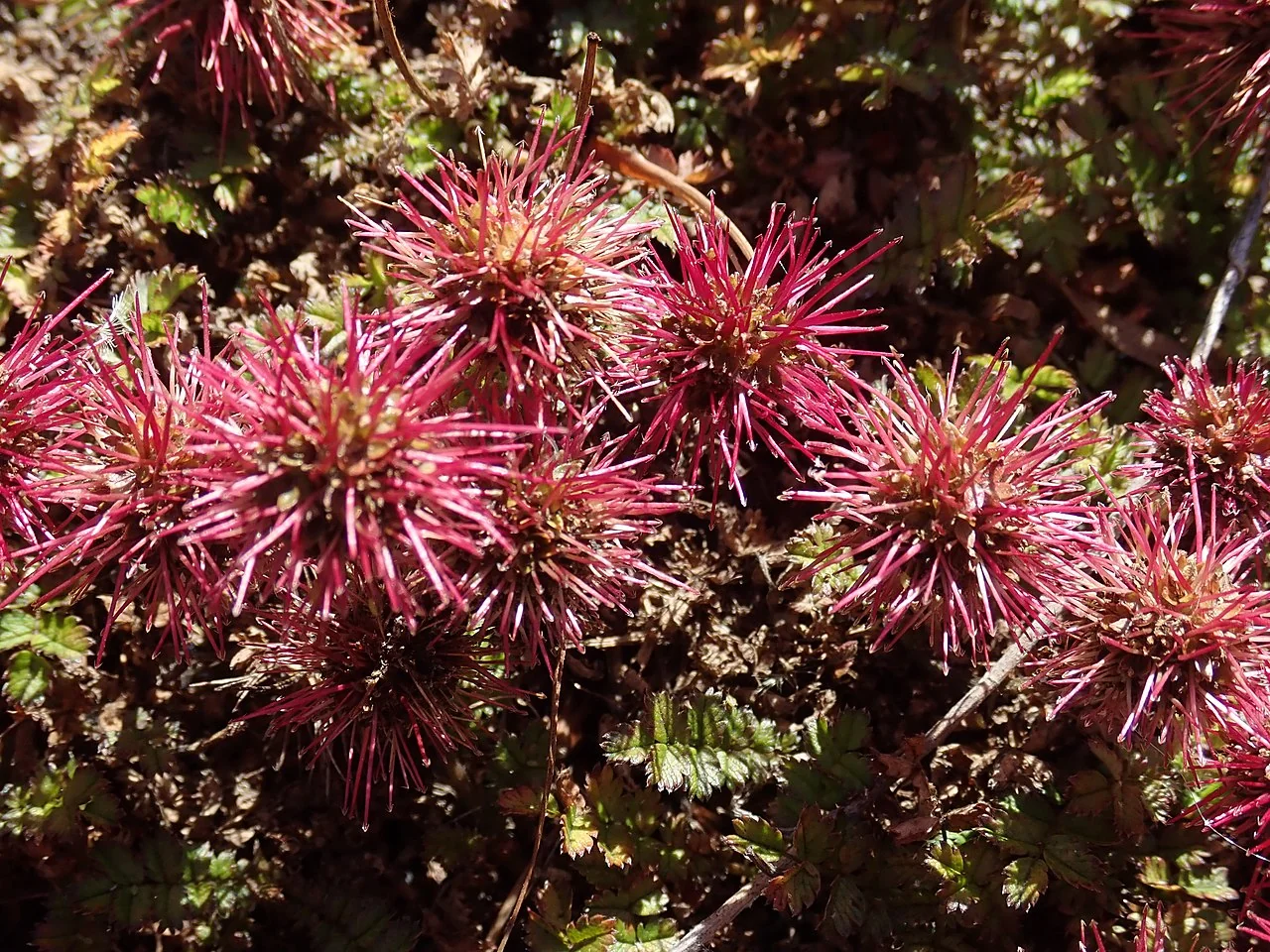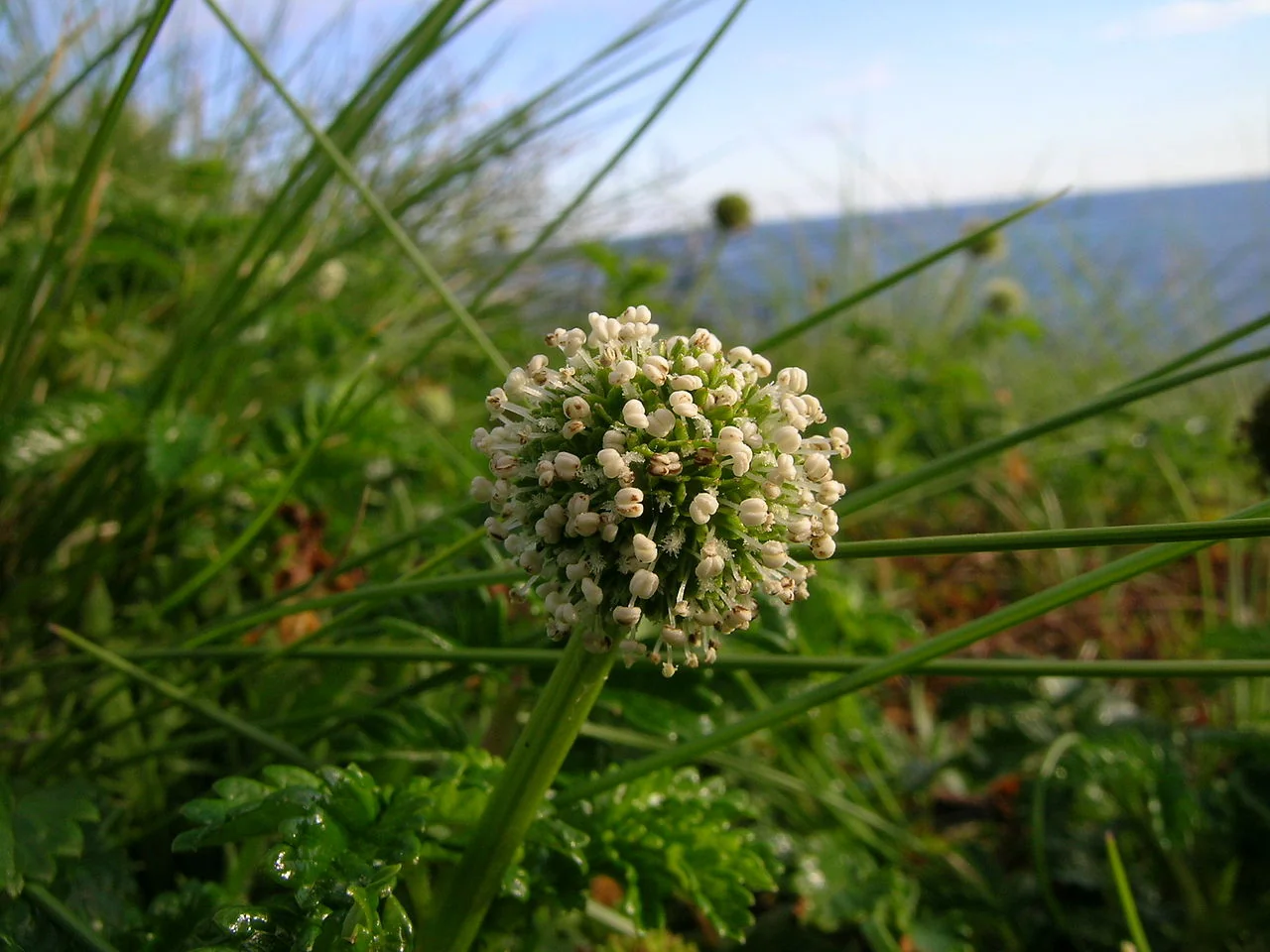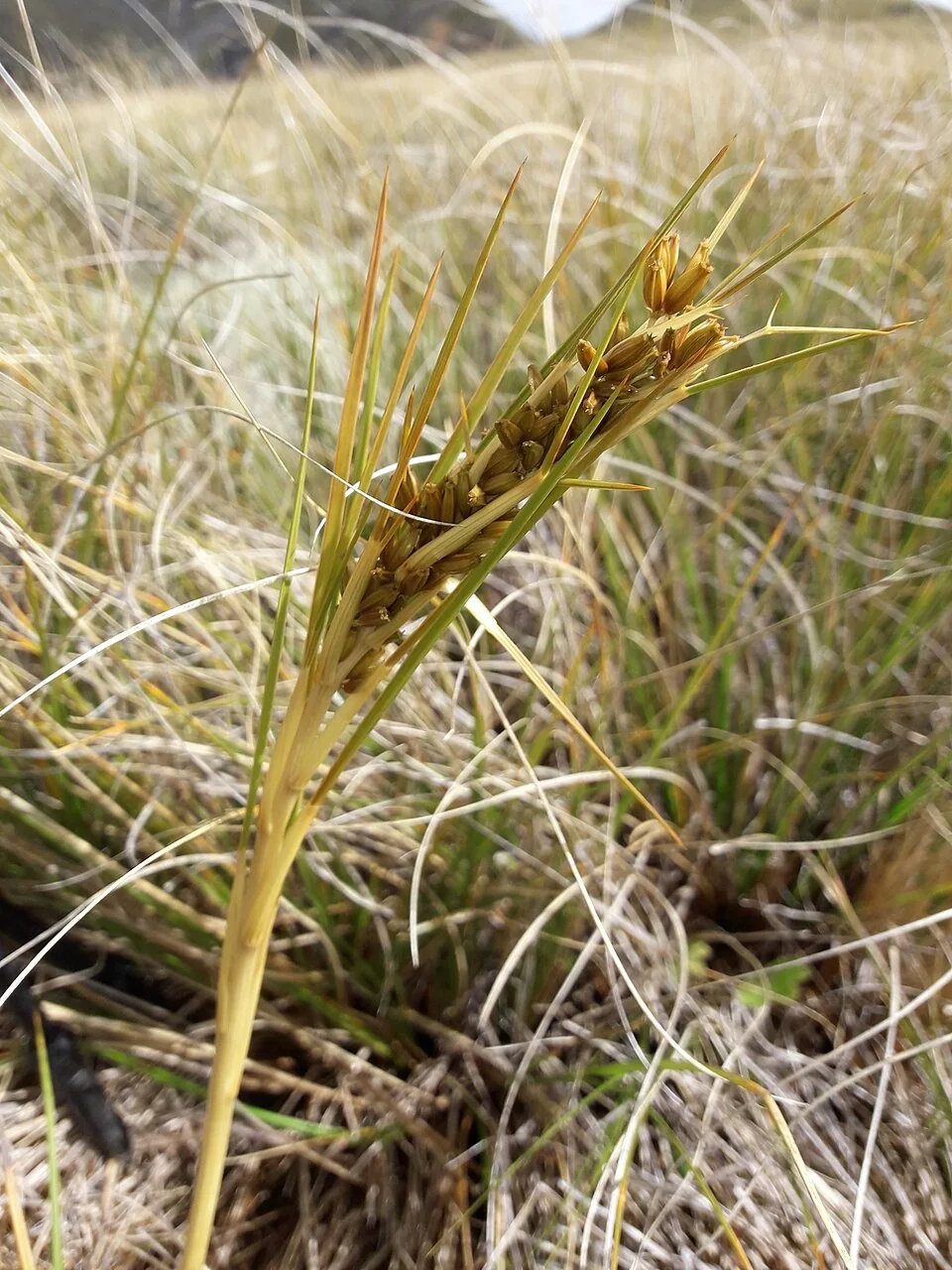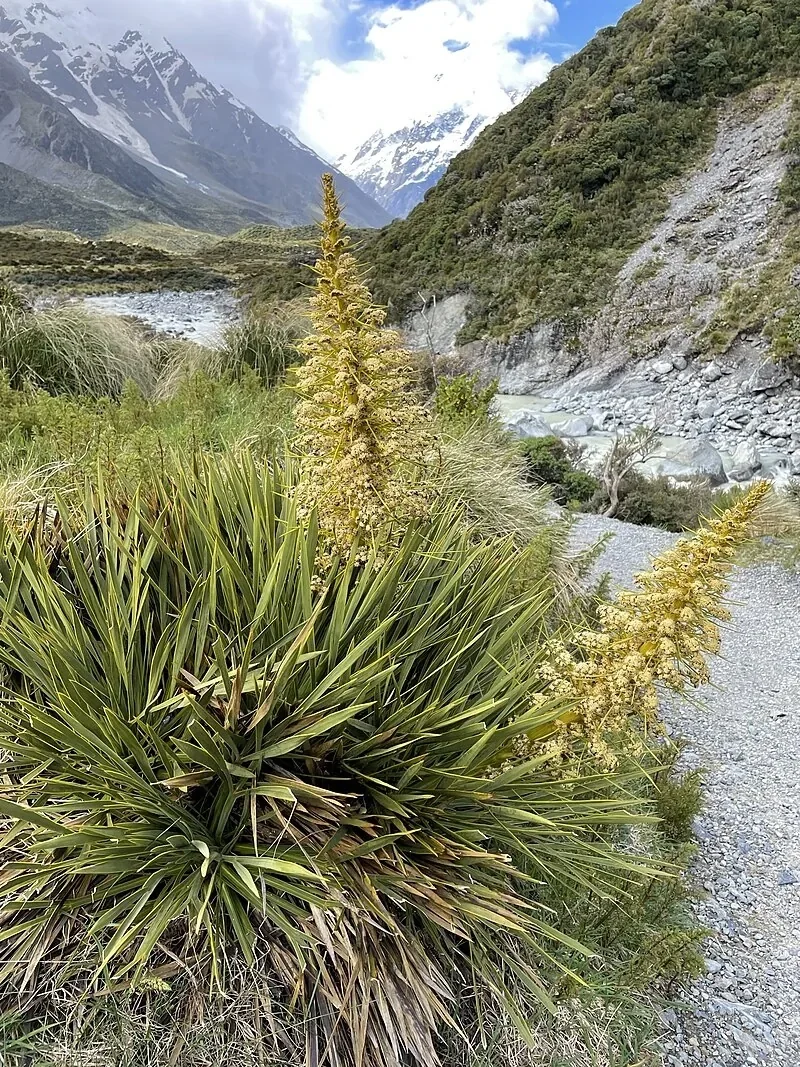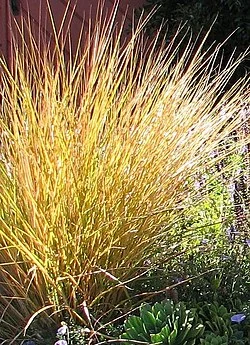
Gossamer Grass
Anemanthele lessoniana
Explore more NZ native plant guides in our index .
Introduction
Graceful Wind Grass
Anemanthele lessoniana , commonly known as gossamer grass, pheasant's tail grass, or wind grass, is a species of grass native to New Zealand. It is a popular ornamental grass in gardens and is known for its colourful, arching foliage that changes from green and gold to copper and bronze throughout the seasons.

Plant Description
Physical Characteristics
Anemanthele lessoniana is a graceful, evergreen perennial grass, forming dense, arching clumps typically reaching 0.5 to 1 meter in height and spreading 1 to 1.5 meters wide. Its most distinctive feature is its fine, hair-like foliage that shimmers and sways in the slightest breeze, earning it the common name "gossamer grass" or "wind grass."
The leaves are narrow, linear, and have a unique coloration that changes throughout the seasons. In spring and summer, the foliage is a vibrant green, often with hints of gold or orange. As autumn progresses and temperatures cool, the leaves transition to rich shades of copper, bronze, and red, providing spectacular year-round interest. This seasonal colour transformation is one of its most appealing ornamental qualities.
In late spring to early summer, delicate, airy flower panicles emerge from the foliage, rising slightly above the main clump. These inflorescences are typically reddish-purple or coppery, adding to the plant's ethereal appearance. The seeds that follow are small and numerous, and the plant readily self-seeds in favorable conditions. The overall habit is fountain-like, creating a soft, flowing effect in the landscape.
Quick Facts
Grass Characteristics
| Scientific Name | Anemanthele Lessoniana |
|---|---|
| Height | 0.5-1 m |
| Spread | 1-1.5 m |
| Water Needs | Low to moderate |
| Light | Full sun to partial shade |
| Frost Tolerance | High |
| Salt Tolerance | Moderate |
| Growth Rate | Moderate |
| Lifespan | Perennial |
Climate Best Suited to
Anemanthele lessoniana is found throughout New Zealand in a variety of habitats, including coastal areas, grasslands, and open forests. It is a hardy plant that can tolerate a wide range of climatic conditions.
Regional Suitability
| Whangārei | Ideal |
| Auckland | Ideal |
| Hamilton | Suitable |
| Rotorua | Suitable |
| Tauranga | Ideal |
| Gisborne | Ideal |
| New Plymouth | Ideal |
| Whanganui | Ideal |
| Palmerston North | Suitable |
| Napier | Ideal |
| Wellington | Ideal |
| Nelson | Ideal |
| Christchurch | Suitable |
| Dunedin | Suitable |
| Invercargill | Suitable |
| City | Climate Suitability |
|---|
Natural Habitat
Typical Environments
Anemanthele lessoniana is indigenous to New Zealand, where it is found in a variety of habitats across both the North and South Islands. This adaptability contributes to its widespread appeal as an ornamental grass. It typically grows in:
- Coastal Areas: Often found on coastal cliffs and dunes, where it tolerates some exposure to salt spray and wind.
- Open Forests and Forest Margins: Thrives in the dappled light of open forests, forest edges, and clearings, particularly in areas with good drainage.
- Grasslands and Shrublands: A common component of native grasslands and shrublands, especially on drier slopes and banks.
- Disturbed Sites: It can colonize disturbed areas, such as road cuttings and landslides, demonstrating its resilience and pioneering capabilities.
While it can tolerate a range of conditions, it generally prefers well-drained soils and is often found in sites that are not waterlogged. Its natural distribution reflects its ability to adapt to both sunny and partially shaded locations, making it a versatile plant in its native environment.
Plant Conservation
Threats and Efforts
While Anemanthele lessoniana (Gossamer Grass) is widely cultivated globally, its natural populations in New Zealand face conservation challenges. Its national conservation status is currently assessed as "At Risk - Declining," and it is considered "Naturally Rare" due to its limited natural distribution and small population sizes in the wild.
The primary threats to wild populations include habitat loss due to land development and competition from invasive exotic species. Although not explicitly mentioned as a major threat in all sources, browsing by introduced animals could also impact its natural regeneration. Conservation efforts focus on protecting and managing its remaining natural habitats, particularly in coastal and open forest areas. Research into its ecological requirements and genetic diversity is important for ensuring the long-term survival of this unique native grass in its natural environment.
Growing Requirements
Soil Requirements
Prefers well-drained soil but is tolerant of a wide range of soil types.
Light Requirements
Grows best in full sun but will tolerate partial shade.
Water Requirements
Water regularly after planting. Once established, it is drought-tolerant.
Planting Guide
-
When to Plant
Plant in autumn or spring.
-
Site Preparation
Choose a sunny or partially shaded site with well-drained soil.
-
Planting and Aftercare
Dig a hole twice the width of the pot. Place the plant in the hole and backfill with soil. Water well.
Ecological Significance
Broader Ecological Importance
Anemanthele lessoniana , commonly known as Gossamer Grass, holds significant ecological importance within New Zealand's natural ecosystems, contributing to biodiversity, soil health, and habitat provision.
- Erosion Control: Its robust, fibrous root system is highly effective at stabilizing soil, particularly on slopes, banks, and coastal areas prone to erosion. This makes it a valuable species for natural erosion control and land rehabilitation efforts.
- Habitat and Shelter: The dense, tussock-like growth habit of Gossamer Grass provides crucial shelter and microhabitats for a variety of native invertebrates, insects, and small ground-dwelling birds. These creatures find refuge from predators and harsh weather conditions within its protective clumps.
- Food Source: While not a primary food source for large native herbivores (as New Zealand historically lacked them), the seeds of Anemanthele lessoniana can be consumed by native birds and insects, contributing to the food web.
- Pioneer Species: In some disturbed or open environments, it can act as a pioneer species, colonizing bare ground and initiating ecological succession. By improving soil structure and providing initial cover, it can facilitate the establishment of other native plant species.
- Biodiversity Contribution: As an indigenous grass, it contributes to the overall biodiversity of New Zealand's grasslands, shrublands, and open forest ecosystems. Maintaining diverse native plant communities is vital for ecosystem resilience and health.
The presence of healthy populations of Gossamer Grass indicates a functioning ecosystem, and its conservation is important for supporting the wider ecological balance of its native habitats.
Uses
Garden Favorite
Gossamer Grass is widely used in modern landscaping for its flowing texture and autumn colours. It softens hard edges, moves beautifully in the wind, and is excellent for mass planting on banks.
Cultural Significance
Traditional Uses and Values
While not as extensively documented for traditional Māori uses as some other native plants, Gossamer Grass ( Anemanthele lessoniana ) was valued for its aesthetic qualities and its role in the natural environment. The graceful, flowing movement of the grass in the wind was observed and appreciated, and the plant was sometimes used in weaving and for decorative purposes.
Landscaping Uses
Design and Application
Anemanthele lessoniana is a highly versatile and popular ornamental grass in landscape design, valued for its graceful form, dynamic movement, and year-round colour. Its ability to thrive in a range of conditions makes it suitable for various garden styles and applications.
- Mass Planting: Excellent for mass planting on slopes, banks, or large borders, where its collective movement in the wind creates a stunning visual effect. It can soften hard edges and provide a naturalistic feel.
- Specimen or Accent Plant: Its distinctive arching foliage and seasonal colour make it an attractive specimen plant in smaller gardens or as an accent in mixed borders. It pairs well with both native and exotic plants.
- Container Planting: Grows beautifully in pots and containers, where its cascading form can be highlighted on patios, decks, or balconies. Ensure good drainage.
- Erosion Control: Due to its fibrous root system, it is an effective plant for stabilizing soil on slopes and preventing erosion, particularly in naturalistic or restoration plantings.
- Coastal Gardens: Tolerant of some salt spray and wind, making it a good choice for coastal gardens where many other plants struggle.
- Underplanting: Can be used as an attractive underplanting for taller trees and shrubs, providing ground cover and adding textural contrast.
When designing with Gossamer Grass, consider its mature size and spread to allow ample space for its natural form to develop. Its changing colours throughout the year ensure continuous interest in the garden.
Seasonal Care Calendar
Spring
- Remove any dead foliage.
Summer
- Water during dry periods.
Autumn
- The foliage will take on its autumn colours.
Winter
- The plant is dormant.
Pruning
Combing
Don't cut this grass back hard like exotic deciduous grasses. Instead, "comb" it in spring: wear gloves and run your fingers through the clump to pull out loose dead leaves, or gently rake it. This preserves the natural arching form.
How to Grow Gossamer Grass
Division
Division is the most reliable and straightforward method for propagating Gossamer Grass, making it the preferred technique for both home gardeners and commercial propagators. This clump-forming grass naturally develops dense root systems that can be easily separated to create new plants. The optimal timing for division is mid-spring to early summer when the plant is entering its active growth phase, though division can also be successfully performed from late autumn to early spring in milder climates. Begin by carefully digging up the entire clump, taking care to preserve as much of the root system as possible. For younger, smaller clumps, gentle hand separation may be sufficient, but mature, dense clumps often require tools such as a sharp knife, spade, or even a coarse-toothed pruning saw for particularly established specimens. Each division should include both healthy roots and growing points (shoots or buds) to ensure successful establishment. Divisions can be quite small, as Gossamer Grass is vigorous and will quickly fill out under suitable conditions. Replant divisions immediately in well-prepared soil at the same depth as the parent plant, spacing them appropriately to allow for their fountain-like growth habit. Water thoroughly after planting and maintain consistent moisture for the first few weeks until new growth indicates successful establishment. This method also serves to rejuvenate older plants that may have developed dead centers, and can be performed every 3-4 years to maintain plant vigor.
Seeds
Seed propagation of Gossamer Grass is remarkably easy and reliable, with the species showing excellent germination rates under suitable conditions. The plant produces abundant seed heads in late spring to early summer, and these airy, reddish plumes contain numerous viable seeds that can be collected for propagation. Fresh seeds generally provide the best germination results, though stored seeds also remain viable for reasonable periods if kept cool and dry. For controlled propagation, sow seeds in spring in containers placed in a cold frame, providing protection from extremes while allowing natural temperature fluctuations. Seeds can also be direct-sown in autumn outdoors, where they will undergo natural stratification during winter and germinate the following spring. When sowing indoors, lightly cover seeds with a thin layer of fine soil or vermiculite, as they require some light for optimal germination. Maintain consistently moist but well-draining conditions throughout the germination period, which typically occurs within 2-4 weeks under suitable conditions. Gossamer Grass readily self-seeds in garden situations, often naturalizing without becoming invasive, making it an excellent choice for naturalistic plantings. Seedlings should be thinned or transplanted when they develop several true leaves and can handle normal growing conditions. While genetic variation may occur in seed-grown plants, the species generally maintains its characteristic form and desirable garden qualities through sexual reproduction.
Self-Seeding Management
Gossamer Grass has a natural tendency to self-seed prolifically in favorable conditions, which can be managed as a low-maintenance propagation method for naturalistic gardens and larger landscape plantings. Unlike many invasive grasses, Gossamer Grass self-seeds without becoming problematic, making it suitable for managed naturalization in appropriate settings. The plant's abundant, wind-dispersed seeds will establish new plants in suitable microsites around the parent plant, creating natural drifts over time. To encourage controlled self-seeding, allow some flower heads to mature and release their seeds naturally, while removing others to prevent excessive spread in more formal garden settings. Young self-sown seedlings can be easily transplanted during their first year when still small and manageable, allowing gardeners to relocate them to desired positions. This natural propagation method works particularly well in gravel gardens, naturalistic borders, and wild garden areas where the informal, fountain-like growth habit can be appreciated. In areas where self-seeding is not desired, simply cut back flower heads before seeds mature and disperse. The timing for this deadheading should be mid to late summer, after enjoying the ornamental value of the flower heads but before seed dispersal occurs. Self-sown plants typically establish well without additional care, demonstrating the species' adaptability and vigor in suitable growing conditions.
Pests and Diseases
Disease Susceptibility
- Rust: In conditions of high humidity, Anemanthele lessoniana may occasionally be susceptible to rust, a fungal disease that appears as orange or brown spots on the foliage. Good air circulation can help prevent this.
- Root Rot: This is primarily an issue in poorly drained soils or due to overwatering. Root rot can lead to stunted growth, yellowing foliage, and eventually plant death. Ensuring well-drained soil and appropriate watering practices are crucial for prevention.
Pest Resistance
Gossamer Grass is generally considered to be largely pest-free. Serious pest infestations are uncommon, making it a low-maintenance choice for many gardens.
While generally robust, providing optimal growing conditions, particularly well-drained soil and good air circulation, will help maintain the plant's health and minimize any potential issues.
Bonus Tip
Creating Movement and Sound in Your Garden
Anemanthele lessoniana is unparalleled in its ability to introduce dynamic movement and subtle sound into a garden. Plant it where its delicate foliage can catch the slightest breeze, creating a mesmerizing, wave-like motion and a soft, rustling whisper.
Consider mass planting on a gentle slope or in a border where its arching form can spill over edges. The interplay of light and shadow through its fine leaves, combined with its seasonal colour changes, offers continuous visual interest. This grass is particularly effective when planted alongside plants with contrasting textures, such as broad-leaved hostas or structural flaxes, to highlight its unique qualities. Its ability to thrive in both sun and partial shade makes it a versatile choice for adding a sense of wildness and natural elegance to various garden settings.




